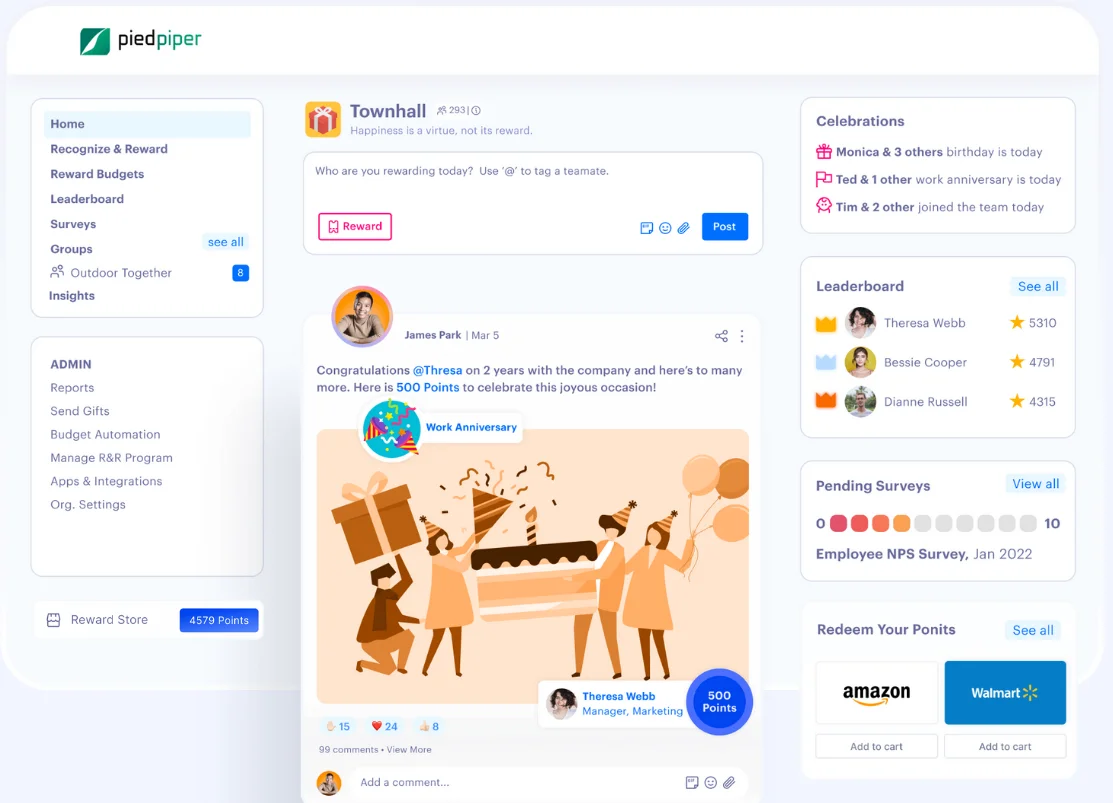Table of Contents
Sales incentive is an important appreciation and recognition method that companies and management must use for their sales team.
Without a proper incentive or commission structure, employees may feel a lack of motivation and appreciation for the goals and objectives they may achieve on the job.
The incentive is one of the most important portions of a salesperson’s compensation, and therefore it is important to offer a lucrative and yet budget-friendly incentive program for the sales team.
In this article, we discuss the importance of sales incentives and how to calculate sales incentives in a step-by-step manner.
Importance of sales incentives for the employee and the company
Sales incentives to employees is a positive affirmation that they are doing a great job. Here are some facts that make sales incentives an important part of organizational pay structures:
- Variable incentive programs help in motivating sales team members to achieve their targets.
- A good incentive plan should be able to reward effort and not just the achievement of goals.
- Employees who go beyond their targets to achieve and set higher benchmarks should be rewarded and appreciated in a better and more sophisticated manner to encourage such performance.
- Achieve good sales performance, team collaboration, team spirit, and low attrition rates within the company.
Management that takes note of all these things is highly sought after by employees everywhere. A standard sales incentive program may not be able to reward and appreciate all kinds of sales staff.
There is a need for a more personalized and flexible incentive program that motivates low performers, core performers, and high performers equally so that all 3 of these category employees strive to achieve better.
How to calculate sales incentives: Step-by-step guide
Here is the step-by-step guide for sales incentive calculation.
1. Define clear objectives and metrics
In order to provide a good incentive structure to employees, it is important to lay out the objectives and goals that the sales team must be able to achieve and the metrics using which they can be measured.
These metrics and numbers for target achievement lays down the framework of the sales incentive program of a company. It must be communicated clearly and must be easy enough for employees to understand and calculate for themselves.
For example: A simple guideline such as: Minimum of 10k in sales turnover with a score of 95% in customer satisfaction eligible for a sales incentive of 10 percent of basic pay. The percentage may rise with every 1k achieved over the minimum slab of 10k sales turnover.
2. Set realistic targets
The target to be achieved for acquiring sales incentive must be achievable and tangible. Unrealistic and too high of a target would end up demotivating the sales team and can cause a dip in the overall performance and team spirit. It is important to reward the efforts to make a sales deal happen and not just achieve or close a deal.
Separate parameters for customer retention, repeat sales, customer satisfaction, referral etc should also be tracked and rewarded so that the sales team members are looking for better and newer avenues to improve productivity and performance.
3. Determine the incentive structure
Having a clear and conceivable incentive structure is important. It must be simple and communicated to the sales team members so that they can compute their overall incentive by themselves. If there is ambiguity in incentive structure, the employees may feel confused and perhaps not appreciate the incentive that they receive.
Once the management comes up with the incentive structure, the HR team or the Sales manager must discuss the same with the employees. The company should also be open to suggestions and remarks from the sales employees and include the same to the plan if they seem relevant.
4. Calculate individual sales performance
Using the sales objectives, metrics, and incentive program structure, the managers must now be able to work out the individual sales performance. Analyze the sales figures and check for each individual how much sales turnover or numbers have been achieved.
Check for the following parameters:
- Overall turnover
- Individual target achievement
- Percentage increase above minimum target
5. Apply the incentive formula
Now that we have arrived at individual sales performance and contribution for the month or quarter, we can now apply the incentive formula that has been created. Based on individual performance, the sales employee incentive can be calculated.
For example, the incentive can be fixed at 10 percent of sales turnover or 25 USD per product for quantifiable sales. If an employee ABC has achieved the minimum required target to qualify for the incentive, 10 percent of his sales quota will also be awarded as a sales incentive for the month/quarter.
6. Consider additional factors
It is important to have more than one parameter to assess sales performance so that all attributes can be rewarded including factors like:
- Customer satisfaction score
- Short sales cycle length
- Repeat purchases/orders generated
- Referral gained
- Exceptional customer service
Ensuring that all these additional factors are also evaluated and rewarded ensures that all employees and their efforts are recognized, improving employee morale, performance, and productivity.
Achieving targets is not the only objective when it comes to sales; making sure that your customers are happy, well cared for beyond the sale and creating repeat orders and referrals out of existing clients are all important parameters.
7. Review and verify calculations
Once all sales team member contributions and performance is analyzed and their incentives are computed using the company’s unique incentive program, the managers and the HR team must verify and review all the calculations before sending the papers into accounts. This ensures that no mistakes have been made in calculating the incentives and that no parameters have been overlooked before the final incentives are rolled out.
For example: the HR team can include final incentives for full attendance, overtime and other perks that are due for the employees and can be added to their final incentive structure.
8. Communicate incentives and provide feedback
The incentive calculations and final sheet can either be handed in person by the sales manager or the HR manager to the sales team member or can be emailed by them. They can discuss the final incentive in detail and can ask for any feedback on the same.
It is important that the sales employee feels rewarded and appreciated with his incentive package, and therefore, the managers must take in feedback and work on the corrections, if any.
9. Monitor and evaluate the incentive program
The incentive program is unlike the company’s pay structure or policies - it must be reviewed periodically and updated so that it is at par with industry standards. Employees expect the company to have an attractive and lucrative incentive package that keeps them motivated and encouraged to do better, so the managers must update the policies and introduce many kinds of perks that the sales team can enjoy as part of the system.
For example: Not all incentives need to be monetary. The managers can appreciate team effort and collaboration and sponsor lunches/dinners, team outings, holiday packages, etc.
High performers can be awarded gift certificates, holiday vouchers, extra paid-offs, movie tickets, etc, to make them feel special and appreciated for their efforts in the organization.
Conclusion
Using this step-by-step guide to create a customizable yet beneficial incentive program for your sales team can help reward and appreciate their performance in monetary and non-monetary ways.
A good, steadfast incentive program is important to keep up the performance of sales employees and promote a culture of mutual appreciation and recognition within the company.





